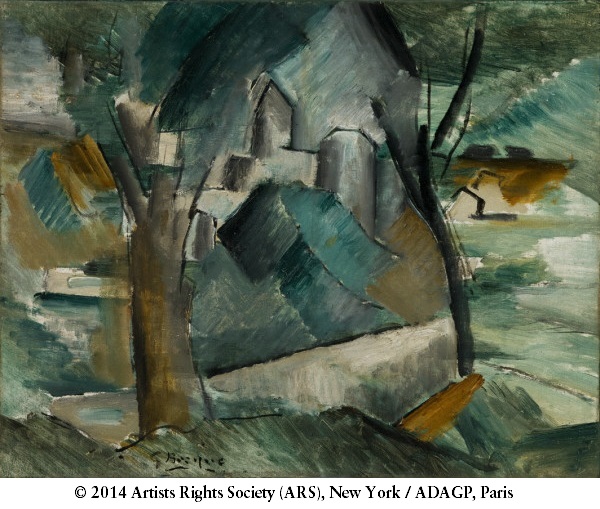Georges Braque, Carrières-Saint-Denis, 1910

The Work
We see in this painting a group of trees and village houses, reduced to lines and irregular forms. The colors are in the palette of blues, grays, greens, and yellows. The brush strokes are very visible, often indicating a direction, perhaps to suggest the movement of the wind.
Historical Moment
In 1910, France was in a period of relative peace, under the Third Republic (1870-1940). Carrières-Saint-Denis was the historical name of a commune, 8 kilometers west of Paris, which today is called Carrières-sur-Seine.
The Genre
The term cubism derives from the word "cube," in reference to the geometric form. Artists like Pablo Picasso, Georges Braque, and Marcel Duchamp wanted to reduce visual images to elementary forms and colors, to achieve a new way of looking. Cubism applied not only to paintings of still lifes, but also to landscapes, portraits, and sculptures.
The Artist
Georges Braque (1882-1963) was born in Argenteuil, and was trained as a decorator. Becoming a painter, he began as an impressionist, then adopted fauvism and finally cubism. Toward the end of his long life, he returned to a realistic style. Today he is considered to be the most famous of the French cubist painters.

